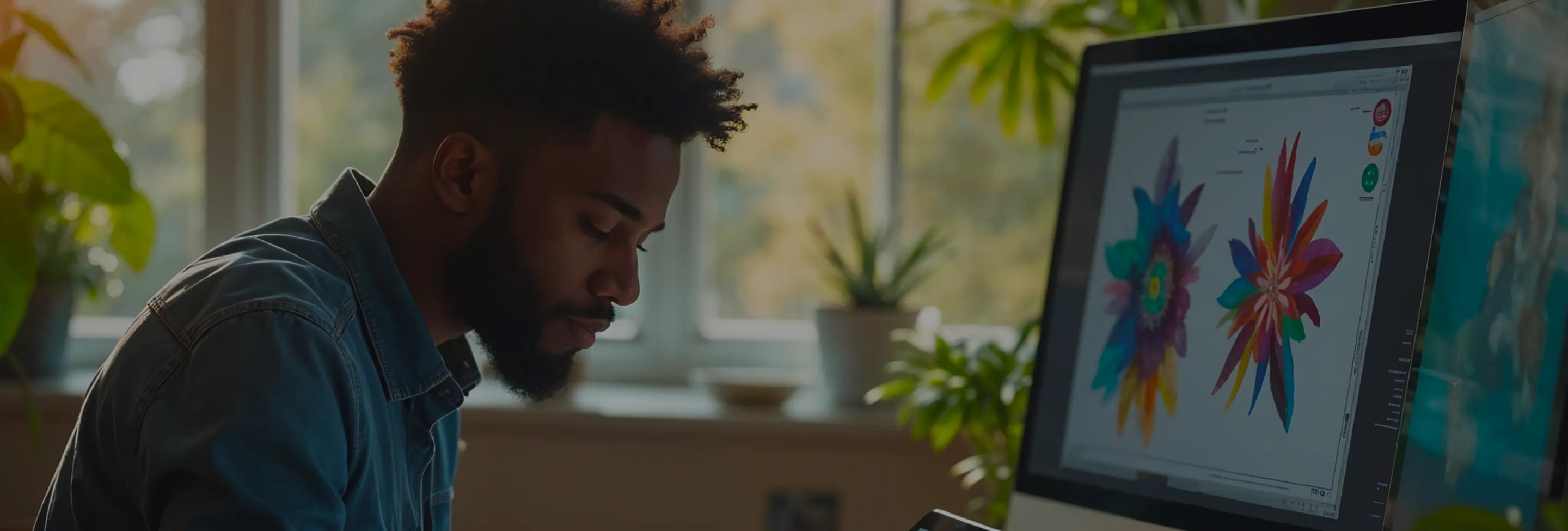
Through analyzing over 3,000 client engagements with graphic design agencies, we identified the foremost challenges businesses face in budgeting and project management. Flat rate graphic design services emerged as a solution to address 80% of cost-related concerns and streamline the creative process. This comprehensive Q&A delves into the nuances of flat rate pricing, providing actionable insights and expert advice to help you make informed decisions for your design needs.
Flat rate graphic design refers to a pricing structure where clients pay a fixed fee for specific design services, regardless of the time or resources required to complete the project. Unlike traditional billing models that charge hourly rates, flat rate pricing offers predictability and transparency in costs.
Example: A company might pay a flat fee of $500 for a complete logo design package, which includes initial concepts, revisions, and final delivery, instead of paying $50 per hour for each design activity.
Common Misconception: Flat rate pricing is always cheaper. While it provides cost certainty, the total fee may be higher or lower than hourly rates depending on the project's complexity and scope.
Actionable Solution: Evaluate the project's requirements and compare flat rate packages with estimated hourly costs to determine the most cost-effective option.
Flat rate models commonly cover a range of services, including:
Real-World Example: A startup might choose a flat rate branding package priced at $1,500, which includes logo design, business card design, and social media kit, ensuring all essential branding materials are cohesively developed.
Predictable Budgeting: Clients know the total cost upfront, facilitating better financial planning.
Simplified Decision-Making: Fixed packages make it easier to choose services without worrying about fluctuating costs.
Efficiency Incentive: Designers are motivated to complete projects efficiently since their earnings are not tied to the number of hours worked.
Transparent Scope: Clear definitions of what is included in the flat rate reduce misunderstandings and scope creep.
Important Note: Ensure that the flat rate package aligns with your project needs to fully leverage these benefits.
Actionable Tip: Clearly outline your project requirements and confirm that all desired services are included in the flat rate package before committing.
Flat rate pricing fosters trust and transparency between clients and designers by setting clear expectations regarding costs and deliverables. This clarity minimizes disputes over billing and allows both parties to focus on achieving the project's creative objectives.
Example: A client agrees to a flat rate of $800 for a complete website redesign, including three rounds of revisions. This agreement ensures that both the client and designer are on the same page regarding the project's scope and costs.
Troubleshooting Tip: If additional services are required beyond the initial agreement, establish a clear process for handling extra costs to maintain a positive working relationship.
Actionable Solution: Create a checklist based on these factors and use it to evaluate potential graphic design providers systematically.
Example: A business outlines specific color palettes, brand guidelines, and target audience information in the project brief, enabling the designer to create more effective and aligned designs.
Actionable Tip: Use project management tools like Trello or Asana to track tasks, deadlines, and feedback, ensuring organized and efficient project execution.
Most flat rate packages include a specified number of revisions. To manage changes effectively:
Troubleshooting Tip: If additional revisions are needed beyond the initial scope, discuss the possibility of extending the agreement or negotiating an add-on fee with the designer.
Example: A client negotiates a contract that includes three design concepts, two rounds of revisions, and a final delivery within four weeks for a $1,200 flat rate fee.
Actionable Solution: Develop a retainer agreement with a trusted graphic designer to secure priority service and potentially negotiate better rates for long-term collaborations.
Issue 1: Scope Creep
Issue 2: Misaligned Expectations
Issue 3: Limited Revisions
Important Note: Proactively addressing these common issues can enhance the effectiveness and satisfaction of flat rate graphic design engagements.
Troubleshooting Tip: If delays occur, communicate openly with the designer to understand the cause and negotiate adjusted deadlines if necessary.
Flat rate graphic design offers a structured and predictable approach to managing creative projects, addressing many of the budgetary and logistical challenges businesses face. By understanding the fundamentals, leveraging best practices, and proactively addressing common issues, organizations can harness the benefits of flat rate pricing to achieve their design objectives efficiently and effectively.
Related Questions:




Subscribe to our newsletter to receive $100 off your first month of Tapflare's flat rate unlimited design and development service. Your coupon code will be sent to your email.